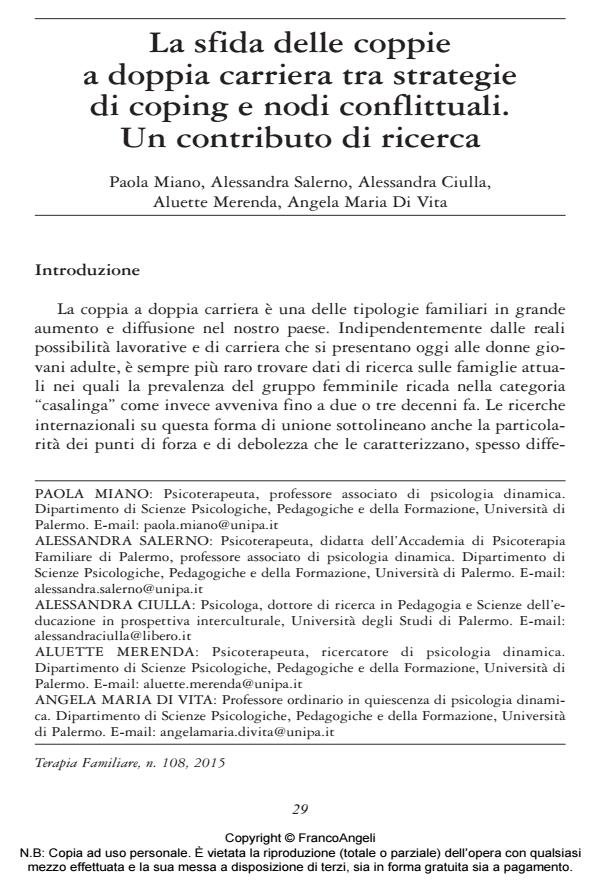La sfida delle coppie a doppia carriera tra strategie di coping e nodi conflittuali. Un contributo di ricerca
Journal title TERAPIA FAMILIARE
Author/s Paola Miano, Alessandra Salerno, Alessandra Ciulla, Aluette Merenda, Angela Maria Di Vita
Publishing Year 2015 Issue 2015/108
Language Italian Pages 30 P. 29-58 File size 213 KB
DOI 10.3280/TF2015-108002
DOI is like a bar code for intellectual property: to have more infomation
click here
Below, you can see the article first page
If you want to buy this article in PDF format, you can do it, following the instructions to buy download credits

FrancoAngeli is member of Publishers International Linking Association, Inc (PILA), a not-for-profit association which run the CrossRef service enabling links to and from online scholarly content.
Parenthood and the work-family balance, at both the private and social level, lead to an overload of responsibility and to disparity in work to the detriment of women. In dual-career families the work/family conflict affects various aspects; in our research we examined WIF conflict (work to family) and FIW conflict (family to work) in a sample of 483 dual-earner parents. Results from this study underline that the increase of family tasks concerning birth and child care is associated with a traditional work-family balance strategy, that reflects traditional roles differences between public-male-breadwinner and private-feminine-homemaker.
Keywords: Dual-earner families, work to family conflict, family to work conflict, gender, parenthood; couple
Paola Miano, Alessandra Salerno, Alessandra Ciulla, Aluette Merenda, Angela Maria Di Vita, La sfida delle coppie a doppia carriera tra strategie di coping e nodi conflittuali. Un contributo di ricerca in "TERAPIA FAMILIARE" 108/2015, pp 29-58, DOI: 10.3280/TF2015-108002